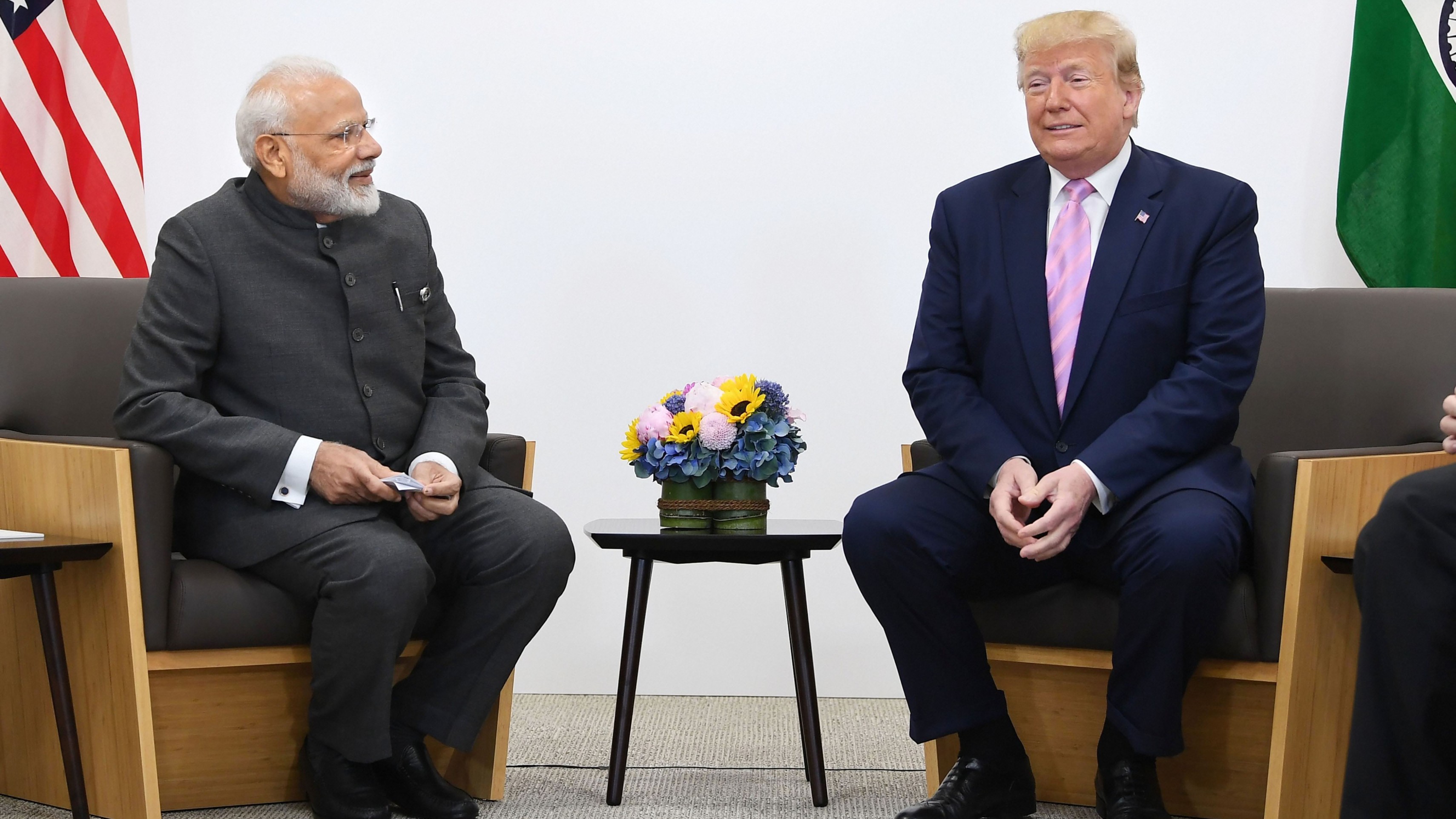
Prime Minister Narendra Modi (L) and US President Donald Trump.
Photo credit: PTI Photo
Prime Minister Narendra Modi has done well to declare that India will not compromise on its interests in the face of the heightened tariff threats from US President Donald Trump. He mentioned the interests of farmers and fishermen, but what really is at stake is the country’s interest and dignity. The Prime Minister also mentioned a “personal” price he’ll have to pay for the position he has taken but the country would be willing to pay that price to safeguard its interests. The US has imposed an additional 25% penalty on most imports from India over its continued purchase of Russian oil, pushing overall duties to 50%. The announcement came in a second tranche, a few days after the 25% tariff was announced.
There is a 21-day buffer for the implementation of the tariffs. India and the US have been negotiating a trade deal that now stands halted. Trump has said that no negotiations would take place until the tariff issue is resolved. The negotiations were reportedly stuck mainly at the US demand for access to India’s agricultural market and dairy sector. India would refuse to entertain US demands in these and other areas that may hurt its economy and the livelihood of its people. India is among the countries in the top tariff bracket. Some of the countries have negotiated successfully with the US and ensured lower tariffs. The situation for India, a much larger economy, is markedly different, considering the projection of its sustained growth in the coming decades.
India has already said that the US action is “unfair, unjustified, and unreasonable’’ and noted that several other countries are doing what India is doing without facing any action from the US. It is possible that Trump is targeting India also for non-trade reasons – he may be responding to India’s denial of third-party intervention in its ceasefire with Pakistan after the May hostilities. It is also possible that the US is using the tariff threat for a better bargain in the trade negotiations. India should not go the extra mile to appease Trump in trade or other domains. An adverse tariff regime will certainly hurt India as the US is a major trade partner. It will also leave a dent on the GDP. But the country can look at strategies and opportunities that will help it offset the losses caused by the US action. India’s response to the evolving situation needs to be informed by the understanding that its economy is large and resilient enough to absorb short-term jolts.
